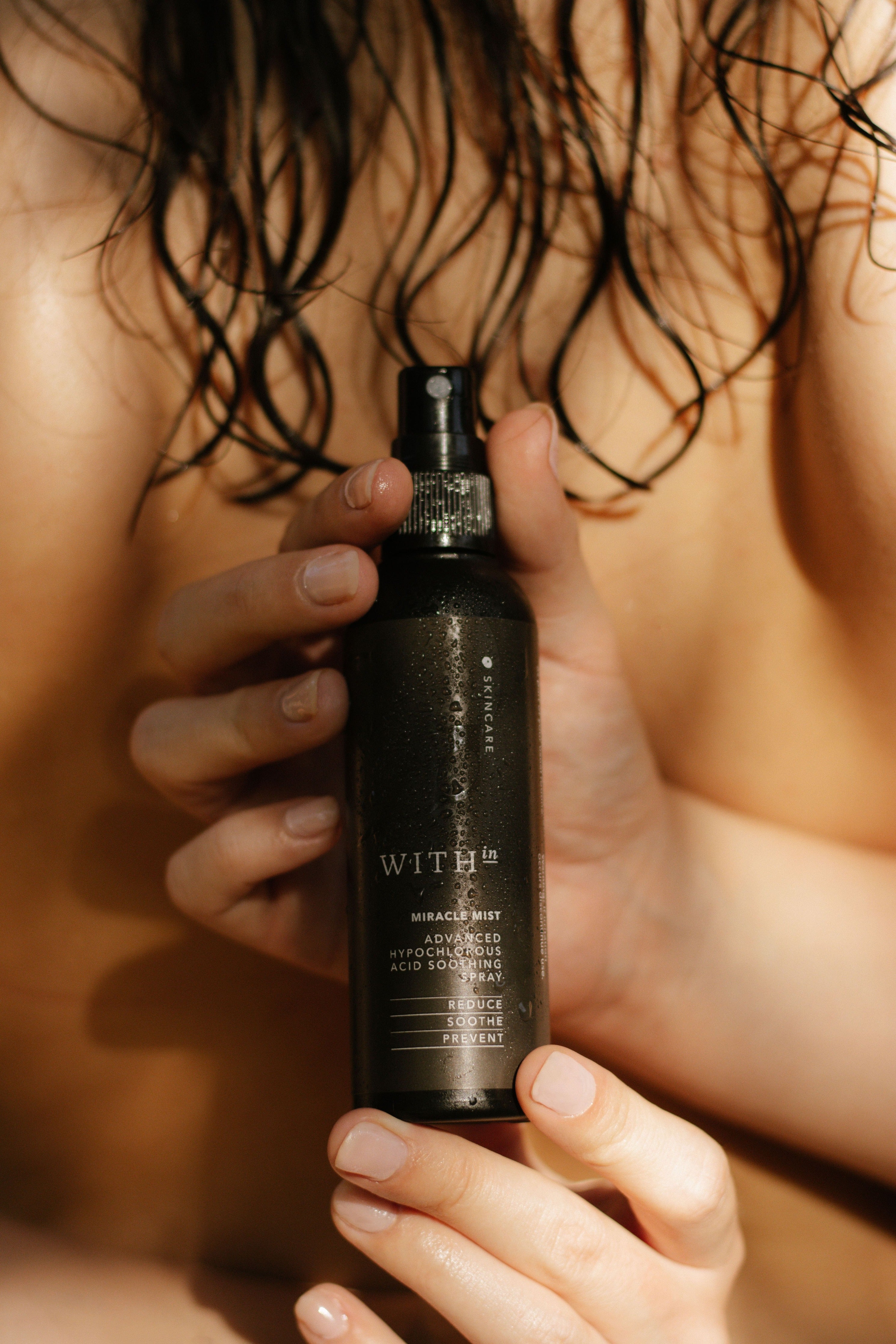The Synergy of Hypochlorous Acid and Active Ingredients in Skincare

In this article, we'll explore which ingredients can be applied directly on top of hypochlorous acid and which should wait until the solution has fully dried.
Ingredients that can be Directly Combined with Hypochlorous Acid
Hypochlorous acid is a powerful yet gentle antibacterial agent that leaves your skin clear of 99.99% of bacteria after just a minute. Products that can be layered directly on top of freshly spritzed hypochlorous acid include:
- Hyaluronic acid
- Niacinamide
- Salicylic acid
Hyaluronic acid is a humectant that acts to retain moisture in your skin barrier, helping to keep your skin plump and hydrated. The combination of hyaluronic acid layered on top of HOCl can help support the skin’s natural moisture barrier and reduce bacterial growth, effectively preventing fine lines and breakouts.
Niacinamide is a type of vitamin B3 and has been shown to have anti-inflammatory properties. These properties complement the anti-inflammatory benefits of HOCl and in combination, these ingredients can be especially helpful to combat congestion or other inflammatory skin conditions.
Salicylic acid is a beta-hydroxy acid (BHA) that is effective in treating acne and congestion. It is well known for its keratolytic properties which is its ability to breakdown the outer layers of the skin. The combination of hypochlorous acid spray before applying salicylic acid provides a dual action to combat breakouts and blemishes.
Ingredients that Should be Layered on Top of Settled Hypochlorous Acid
Hypochlorous acid is a strong oxidant so it should be left to dry on the skin before applying antioxidant serums, otherwise, they can cancel each other out. Products that should be layered on top of settled hypochlorous acid include:
- Vitamin C
Vitamin C is an antioxidant which is used to prevent the signs of photoaging as it promotes the production of collagen in the skin. It reduces the appearance of hyperpigmentation and fine lines, which the actions of HOCl can complement. However, as HOCl is a powerful oxidant, it is best to use vitamin C serum when HOCl has fully settled and dried into the skin or to skip the HOCl step when using vitamin C.
Other Active Ingredients
Other products such as retinol and glycolic acid can also be used in combination with hypochlorous acid as it won’t affect your skin’s retinoid tolerance or cause further irritation. However, everyone’s skin is different, and we recommend patch testing if it is your first time using hypochlorous acid.
Conclusion
Hypochlorous acid is a powerful ingredient to combat a multitude of skin concerns. It is important to know how HOCl should be combined with active ingredients to ensure your skin is receiving the optimum benefit from your skincare routine.
Hypochlorous acid can only potentially affect the efficacy of some antioxidant serums, it shouldn’t cause further irritation to the skin when combined with other active ingredients. Whether you choose to incorporate it into your everyday routines or cycle it with your active ingredients, is entirely up to you.



